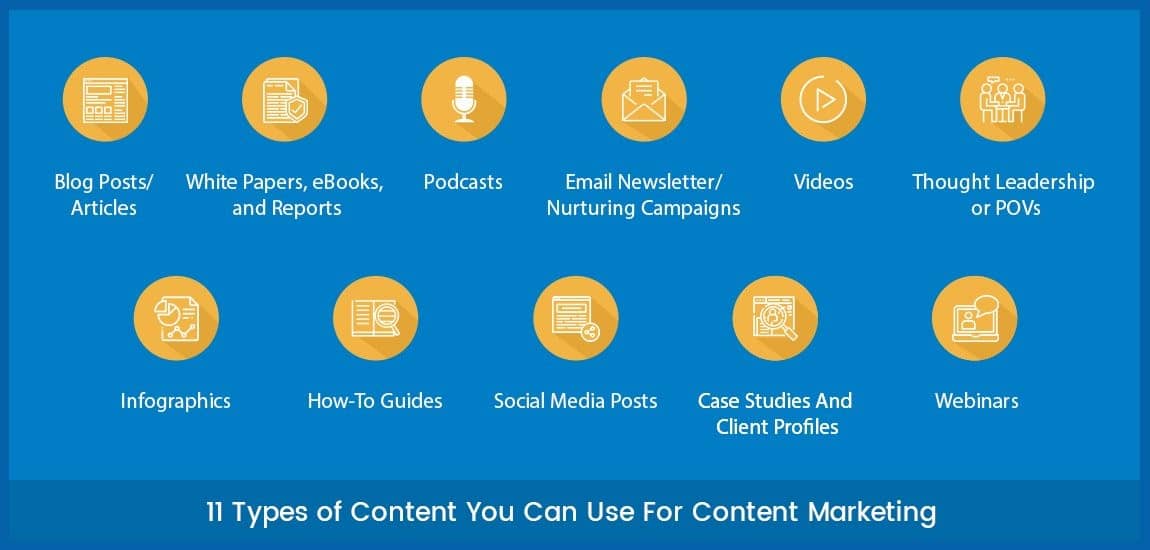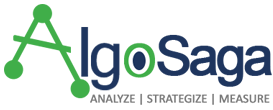Last Updated on April 12, 2025 by Admin
Creating significant content in the highly packed digital space is just the beginning. It’s vital to perfect content distribution to bring about a change. The best content will only be performed when presented to the appropriate audience.
Approximately 45% of online content remains unnoticed, so an effective distribution strategy is essential. The right approach can ensure that your audience sees, engages with, and acts on your content, ultimately increasing conversions and brand loyalty.
What is Content Distribution, and Why is it so Important?
Content distribution involves creating and pushing your content across various media and channels, including your website, ads, social media platforms, email newsletters, and several other channels we’ll examine next.
Nevertheless, let’s begin by discussing the importance of content distribution, which will show you why caring about this strategy is essential.
The importance of content distribution cannot be overstated, as it:
- Increases content visibility
- Expands audience reach
- Boosts brand awareness
- Drives traffic to your website
- Improves SEO performance
- Enhances engagement and interaction
- Generates leads and conversions
- Establishes thought leadership
Different Types of Content You Can Distribute
Content distribution isn’t limited to just blog posts. Here’s a quick rundown of the diverse content types you can distribute:

- Blog posts or articles (existing and new)
- White papers, ebooks, and reports
- Podcasts
- Email newsletter or nurturing campaigns
- Videos
- Thought leadership or POVs
- Infographics
- How-to Guides
- Social media posts
- Case studies and client profiles
- Webinars
Kinds of Distribution Channels

Content distribution channels are the pathways through which you share your content with your intended audience. Your content distribution guide relies heavily on their role, deciding how and in what venues your audience comes across messaging for your brand. These channels are typically categorized into three main types: owned, earned, and paid. Every classification plays a specific role and caters to unique parts of your audience. Let’s dive deeper into each:
Owned Channels
Owned channels are platforms where your brand has total authority. They act as your core for distributing content and are often the basis for your online profile.
Channels include:
- Website and blog
- Social media profiles
- Email newsletters
- Mobile apps
- Podcasts
- Branded communities or forums
Benefits:
- Absolute control of content and branding
- A direct association with your audience
- Bargain-friendly over time
- The collection of important first-party data.
Challenges:
- Requires continuous effort to make and sustain
- Minimized access without any promotion
How to choose:
Put your owned channels first as your primary distribution channel. Begin with an excellent website and blog and extend to social media profiles and email marketing. As you progress, look into creating more refined owned channels, such as mobile apps or podcasts, that correspond to what your audience likes.
Earned/Shared Channels
Content shared through third parties, often without payment, is known as earned channels. In today’s digital setting, this is word-of-mouth marketing.
Channels include:
- Social media advertising (Facebook Ads, LinkedIn Ads, etc.)
- Pay-per-click advertising (Google Ads)
- Sponsored content and native advertising
- Influencer partnerships like LinkedIn influencer marketing
- Content discovery platforms (Outbrain, Taboola)
Benefits:
- Strong trustworthiness and credibility
- Potential for viral reach
- Cost-effective (often free)
Challenges:
- A smaller degree of command over the messaging and scheduling
- It can fluctuate unpredictably and can be difficult to scale
How to choose:
Create high-quality, shareable content that will help you maximize earned distribution. Build relations with influencers, journalists, and key leaders in the field. Participate in active online discussions related to your business and motivate satisfied customers to share their stories.
Paid Channels
The essence of paid channels is spending money to share your content with a broader or more specific audience. These routes grant more authority regarding reach and targeting than earned media.
Channels include:
- Facebook Ads, LinkedIn Ads, and other social media advertising
- Advertising those charges based on each click (Google Ads)
- Advertising formats that are sponsored and native
- Influencer partnerships
- Outbrain and Taboola are content discovery platforms.
Benefits:
- Precise audience targeting
- Outcomes that are both scalable and predictable
- A fast way to escalate visibility and reach
Challenges:
- It needs continuous financial investment
- It could be regarded as less natural than earned media
- When not constantly tailored, the level of effectiveness can drop.
How to choose:
Use paid channels to build on your most successful content or target different audiences immediately. Start with a low budget and trial different platforms to determine the best for your brand. Find out which sources your target audience relies on and which media they trust.
Integrated Approach
While it is essential to understand the differences between the different types of channels, the most valuable information about content distribution should include all three. Here’s how to create a balanced approach:
- A good foundation should come from your channels to ensure you have quality content and a consistent brand voice.
- It is time to earn media for your brand, share content, and engage with your audience to spread the word.
- Using paid channels to increase your reach and reach specific audience segments is better.
- Monitor performance on each channel and alter your approach whenever one channel is doing better than the other.
- Look for similarities between the channels. For instance, you may use paid advertising to increase the effectiveness of a piece of content that is already performing well.
Content Distribution Strategies to Implement in 2024: 7 Strategies That Work
Strategies of content distribution in 2024 are more effective and diverse than they have ever been. Below, you will find the seven key strategies that will help you to get the most out of your content to expand your audience.
1. Utilize Omni-Channel Distribution
Omnichannel distribution means your content will reach your audience in any way possible. In the super-fast digital era, consumers are exposed to information through various channels and on multiple gadgets. Therefore, it becomes crucial to maintain the brand across social media, emails, and websites.
If you have a blog post, you can convert it into an infographic that you can post on Instagram, a video that you can upload on YouTube, or audio content that you can share on Spotify. This way of targeting your audience through several channels makes it possible to reach your audience at all times.
2. Repurpose Content for Multiple Platforms
Curiously, the most effective way to make the content last for a long time is to repurpose it. Transform one big article into several smaller ones.
For instance, a single white paper can be broken down into several blog posts, infographics, and social media updates. As a communication strategy, repurposing content lets you get the most out of a specific material and address different target audiences on other platforms without continuously creating new content.
3. Run Paid Social Media Campaigns
Paid advertising is one of the most valuable tools of the modern content distribution strategy on social media.
Even though organic reach has been drastically reduced on social networks like Facebook and Instagram, paid ads help select the audience by gender, age, interests, etc. This level of targeting ensures that your content gets to the right audience most likely to engage with it.
Ensure that you look at different ad formats, including carousel ads, video ads, and sponsored stories, to better understand the most effective content for your target audience.
4. Use Influencer Marketing
In 2024, influencer marketing remains a significant approach to managing the content of a target audience. Influencers relevant to your brand’s niche have already built an audience; you can tap into it through partnership.
Influencers can help spread your content to new followers through sponsored posts, product reviews, or partnerships. It is crucial to choose influencers who are relevant to your niche and have audiences who are more likely to engage with your content.
5. Focus on Video Content Distribution
Video content remains the most popular and is still on the rise in 2024. Video content is very interactive and easily distributable, from the short-form videos available on platforms like TikTok and Instagram Reels to the longer-format content on YouTube and Vimeo.
Post your videos on many sites to attract more viewers, and ensure that each video is properly posted for the site. For instance, a YouTube video may be split into other clips suitable for Instagram, or a live session may be divided into segments for LinkedIn.
6. Develop a Strong Email Marketing Campaign
One of the most influential and direct content distribution methods is email. By developing a specific email list and providing personalized and useful content directly to your subscribers, you can create substantial traffic for your website.
Email is the perfect way to distribute newsletters, unique content, new blog entries, or product releases. Divide your email lists according to audience behavior and tastes to boost engagement.
7. Use Guest Blogging for Earned Distribution
Guest blogging is great for sharing your content across various platforms and reaching new readerships. Publishing guest posts on respected blogs in your industry can let you construct authority, develop backlinks, and draw visitors to your site.
Seek websites that engage your target audience and produce high-quality content that adds meaningful insights to the discussion. As a result, you’ll enjoy heightened exposure and credibility.
Conclusion
In 2024, the main element of a successful content marketing strategy is effective distribution. By combining owned, earned, and paid channels and applying the tactics outlined, you can increase the reach of your content, enhance brand authority, and stimulate conversions.
If you’re prepared to up your content distribution game, AlgoSaga content writing service is here to assist. Our professional content creators and marketers will devise a personalized content marketing strategy to give your brand the attention it deserves.
